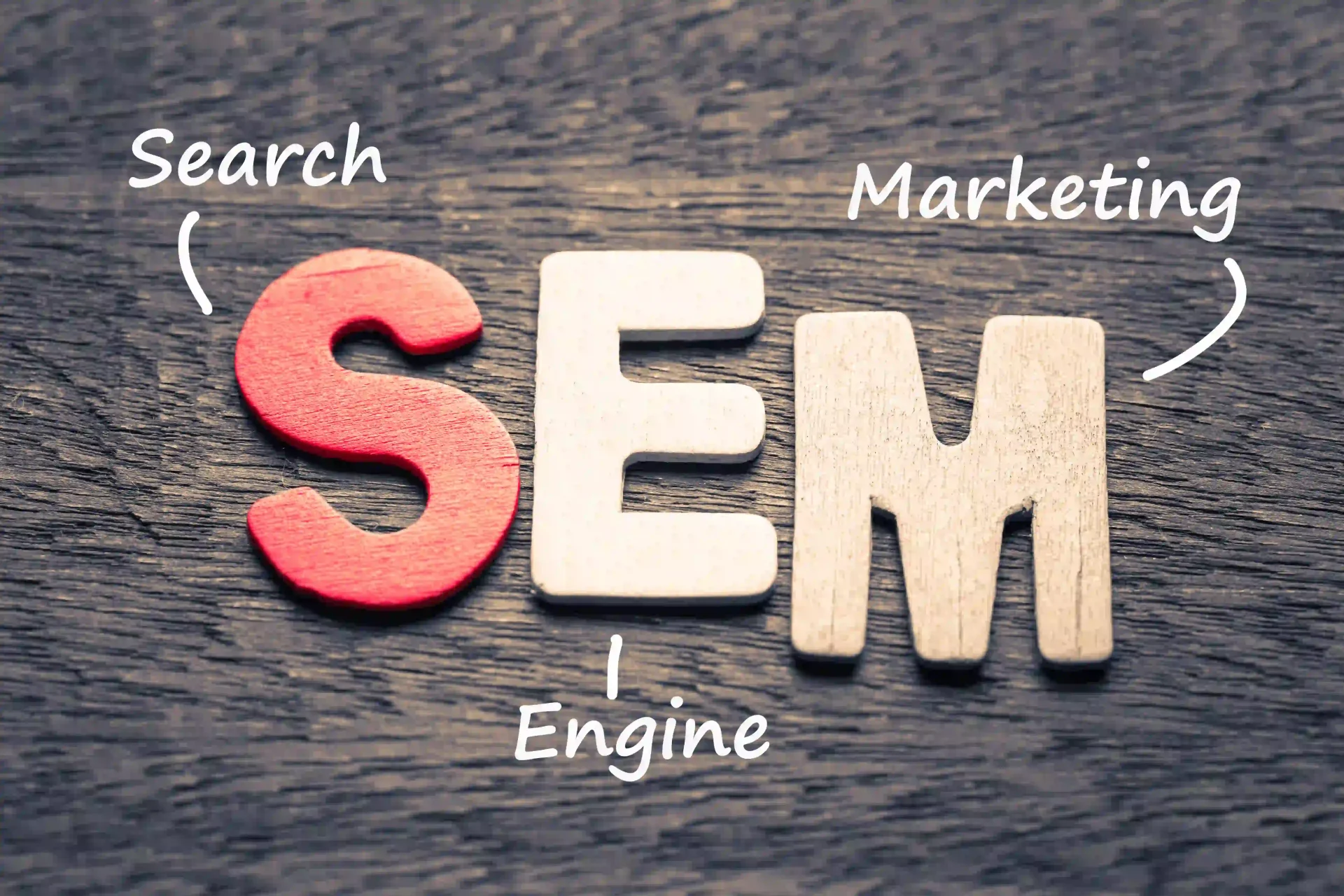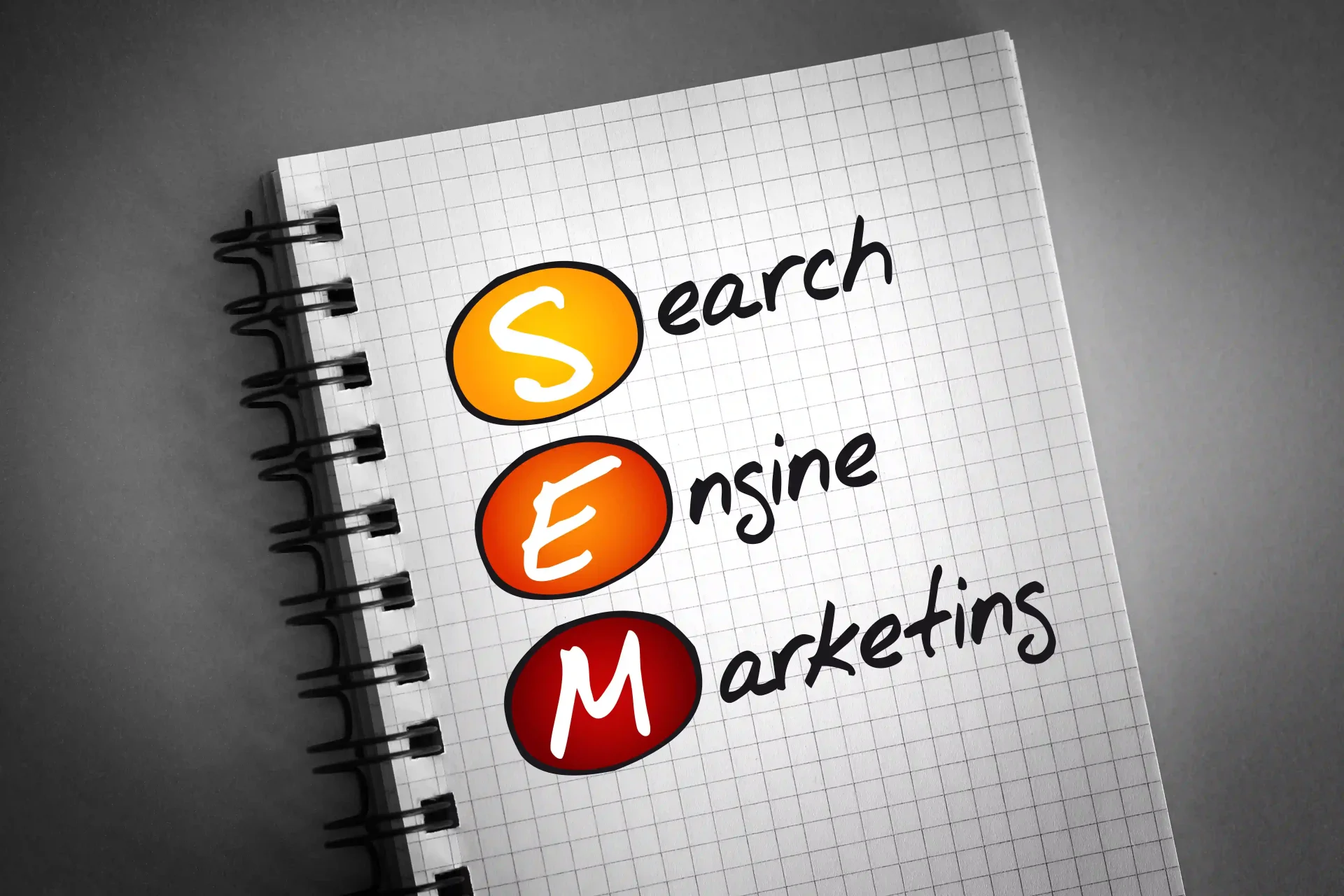Search Engine Marketing
SEM is a form of digital marketing that involves the promotion of a website by increasing its visibility in search engine results pages through paid advertising.
What is Search Engine Marketing?
Paid ads can rank high on Google
Search engine marketing (SEM) is marketing a business using paid advertisements on search engine results pages. Advertisers bid on keywords that users of services, such as Google, might enter when looking for certain products or services, which gives the advertiser the opportunity for their ads to appear alongside results for those search queries.
SEM is defined by tools, techniques, and strategies that help optimize the visibility of websites and web pages through search engines. In short, SEM aims to gain better search engine positioning on Google.
Search engine marketing’s greatest strength is that it offers advertisers the opportunity to put their ads in front of motivated customers who are ready to buy at the precise moment they’re prepared to make a purchase. No other advertising medium can do this, so search engine marketing is often an effective and powerful way to grow your business.
Contact me and let’s discuss your questions, concerns and needs within SEM!
Keep on reading below!

SEM benefits
Search engine marketing (SEM) is one of the most cost efficient ways to reach your target audience when they are ready to buy. Done properly, SEM will get your ads in front of your target audience with content that is highly relevant to them, all for free until they click on your ad.
With SEM, your ad is placed on the sponsored section of a search engine’s result page. It is ranked based on how much you pay for keywords (the more popular a keyword, the more expensive it is) and a ‘quality score’ of how relevant your ad is in relation to others.
SEM offers great control over your audience, keywords or even landing pages. Unlike SEO, with paid ads you can easily test and refine your marketing campaigns and strategies in order to gain greater results. For paid campaigns, all the data is available so it can be used for adjusting the settings.
Using both SEM and SEO will not only increase the visibility of your ads but increase website traffic too. This also increases your chance to convert prospects into leads, especially when both your paid ads and site come up on top of any search engine results.
Below is a brief list of benefits.
Quick results
Unlike other forms of digital marketing, such as SEO, SEM provides quick results. A properly optimized and targeted SEM campaign can drive traffic to your website within hours of launching the campaign.
Targeted audience
SEM allows you to target specific audiences based on demographics, location, interests, and more. This means that the ads are shown to people who are most likely to be interested in the product or service being offered by your company.
Measurable results
SEM provides measurable results in terms of website traffic, conversions, and return on investment (ROI). You can track the performance of your campaigns in real-time and make data-driven decisions to optimize your campaigns.
Cost-effective
Unlike traditional forms of advertising, such as TV or print, SEM is cost-effective. You only pay when someone clicks on your ad, and you can control the budget for your campaigns.
Increased visibility
SEM helps increase the visibility of a website in the search engine results pages, leading to more traffic and potential customers.
Targeted traffic
SEM allows you to target specific audience segments based on keywords, demographics, and other criteria, ensuring that the right people are seeing your advertisements.
Competitive advantage
If you run a smaller company, SEM provides you with an opportunity to compete with larger companies for top positions in the search engine results pages. Thus, SEM gives you an advantage in attracting new customers even in the competition with large enterprises.

How SEM works
SEM works by allowing you to bid on keywords or phrases that are relevant to your products or services. When someone enters a query that matches those keywords or phrases into a search engine, the search engine will display the highest-paying advertisements at the top or side of the search engine results page (SERP).
Each time someone clicks on your advertisement, you are charged a fee, hence the term “pay-per-click” (PPC). The fee can vary depending on the competition for a particular keyword or phrase and the relevance of the advertisement to the search query.
Here’s a seven step-by-step overview of how SEM works:
Keyword research
The first step in a successful SEM campaign is keyword research. You need to determine the keywords that your target audience is searching for, and that are relevant to your products and services.
Ad creation
You then create compelling ads that include the keywords you have researched. The ads should be optimized for the search engine being used and should include a clear call-to-action.
Bid on keywords
After having created the ad, you then bid on the keywords you want your ads to appear for in search results. The bid amount is the maximum amount you are willing to pay per click.
Campaign launch
Once the ad is created and the keywords are selected, the campaign is launched. The search engine will display the ad to users who search for the keywords being targeted.
Auction
The search engine holds an auction to determine which advertisements will be displayed for each keyword or phrase. The advertisement with the highest bid and highest relevance to the search query will be displayed at the top of the SERP.
Ad display
When someone enters a search query that matches the keywords or phrases being bid on, the advertisement is displayed at the top or side of the SERP.
Performance tracking
You should regularly track the performance of your campaigns, including website traffic, conversions, and ROI. You can use this information to make data-driven decisions and optimize your campaigns for better results.

Tips for effective SEM
Use relevant keywords
Conduct thorough keyword research to identify the most relevant keywords or phrases for your business and target audience. It is important to use keywords that are relevant to the product or service being advertised. Using irrelevant keywords will not attract the right audience and will result in a low ROI.
Optimize ads
Optimizing your ads includes using clear and compelling ad copy, including a call-to-action, and using relevant images. Write clear and concise ad copy that accurately describes the products or services being offered and includes the target keywords.
Ad relevance
Make sure that your advertisements are relevant to the search query, as this will improve the click-through rate (CTR) and the quality score, which can result in lower costs and higher visibility.
Set a budget
You should set a budget for your campaigns and stick to it. This will help ensure that you do not overspend and that your campaigns are cost-effective.
Test and adjust
Make sure you regularly test and adjust your campaigns. This includes testing different keywords, ad copy, images, and targeting options to find what works best.
A/B testing
A/B testing is the process of creating multiple variations of an ad and testing them against each other to determine the best-performing version. You can test different elements of your ads, such as ad copy, ad placement, and targeting options, to determine which combination of elements will produce the best results. A/B testing should be a regular part of your SEM strategy, as it can help continually improve the effectiveness of your campaigns.
Utilize negative keywords
You can also use negative keywords to exclude certain search terms from triggering your ads. This can help prevent the ads from appearing for irrelevant searches and improve the relevancy of your ads.
Use landing pages
Ensure that the landing page for your ad is optimized for conversions, with a clear call-to-action and information about the products or services being offered. You should also use landing pages to direct users who click on their ads.
Use mobile-optimized ads
With more and more people using mobile devices to search for products and services, it is important to create mobile-optimized ads. Mobile-optimized ads will ensure that your ads look great on all devices and will improve the user experience.

Utilize ad extensions
Ad extensions allow advertisers to add additional information to their ads, such as location, phone number, reviews, and more. Ad extensions can improve the visibility of an ad and can provide users with more information about the products and the services you are advertising.
Budget management
Manage the budget effectively by setting realistic daily or monthly budgets, monitoring performance regularly, and adjusting bids as necessary to optimize for better results
Bid management
Continuously monitor and adjust bids to ensure that the advertisements are appearing in the desired positions and generating the desired results.
Regular monitoring
Regularly monitor the performance of your SEM campaigns and make data-driven decisions to optimize for better results.
Track conversions
By tracking conversions you will be able to determine the success of your campaigns. Conversions can include sales, sign-ups, phone calls, and more. Tracking conversions will help you determine the ROI of the campaigns and make data-driven decisions to optimize your campaigns.
Re-marketing
Re-marketing is the process of targeting users who have already interacted with a website, such as visiting the site or adding items to a shopping cart, with relevant ads. Re-marketing allows you to reach users who are already familiar with your brand and are more likely to convert. Re-marketing can be highly effective in driving conversions and should be part of a comprehensive SEM strategy.
Optimize for voice search
With the increasing popularity of voice search, it is important for you to optimize your SEM campaigns for voice search. This involves using long-tail keywords and natural language in ad copy, as well as optimizing for local search and mobile devices. By optimizing for voice search, you can ensure that the ads will appear for relevant voice search queries and improve the chances of reaching your target audience.
Utilize artificial intelligence and machine learning
Artificial intelligence (AI) and machine learning (ML) can play a significant role in SEM by automating and optimizing various tasks, such as bid management, ad placement, and audience targeting. You should consider utilizing AI and ML to improve the efficiency and effectiveness of your SEM campaigns.
Stay up-to-date with industry changes
The digital marketing industry is constantly evolving, and it is important for you to stay up-to-date with industry changes. This includes changes in search algorithms, new ad formats, and new technologies. Staying up-to-date with industry changes will help ensure that your campaigns are effective and stay ahead of the competition.

Conclusion
SEM is a powerful form of digital marketing that can drive traffic and conversions to your website. By following best practices and utilizing the tips outlined in this article, you can create effective SEM campaigns that provide measurable results and a positive ROI.
SEM is a constantly evolving field that requires careful planning and execution. When you take the time to research your target audience, conduct keyword research, and optimize you campaigns for various elements such as ad copy, targeting, and placement, you will be well-positioned to create successful campaigns.
It is important to remember that SEM is not a one-time effort, but a continuous process of testing, adjusting, and optimizing campaigns. By regularly tracking the performance of your campaigns and making data-driven decisions, you can improve the effectiveness of your campaigns and achieve your marketing goals.
Whether you are a small business owner or a marketing professional, if you are looking to drive traffic, increase conversions, and achieve your marketing goals, SEM is definitely worth considering.
Let’s make your solutions visible!
Let's work together to create a successful online presence for your website and boost your online marketing activities that brings real results for the visibility of your solutions and enhance your brand.
I offer services in the below areas. Click the links to learn more.

Contact me and let's discuss your questions, concerns and needs in any aspects in the above areas!
